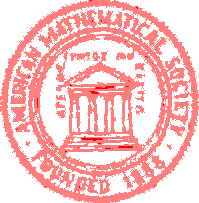Computational science
Research Article
Mathematical modeling with constraints and research of the optimal configuration of an optical stereo system consisting of two flat mirrors and videocamera
Dmitry Nikolaevich Stepanov1 , Igor Petrovich Tishchenko2
, Igor Petrovich Tishchenko2
| 1,2 | Ailamazyan Program Systems Institute of RAS, Ves'kovo, Russia |
| 1 |
 mitek1989@mail.ru mitek1989@mail.ru |
Abstract. The paper continues a series of studies devoted to mathematical modeling and optimization of optical stereo system configuration, consists of video camera and two flat mirrors. In previous work, we developed a model that takes into account various constraints on the configuration of such a system: the size of the stereo base, the size of the mirrors, overall dimensions of the optical system, the absence of double reflection of light rays, preventing the situation when the video camera is reflected in the mirrors. A conditional optimization problem is formulated, the perimeter of the rectangle that bounds the optical system is chosen as the objective function.
In this work we added a set of constraints to the model that define the configuration of the working area, which is formed by the intersection of the fields of view of two virtual cameras. The corresponding changes were made to the program for the numerical solution of the constrained optimization problem using the SciPy package. The results obtained expand the theory of computer vision and can be used in the creation and research of computer vision systems for robotic systems and non-destructive testing systems. (In Russian).
Keywords: machine vision, optical devices, mathematical modeling, stereovision, optimization, catoptric system
MSC-2020 78M50; 78A05, 68T45
78M50; 78A05, 68T45
For citation: Dmitry N. Stepanov, Igor P. Tishchenko. Mathematical modeling with constraints and research of the optimal configuration of an optical stereo system consisting of two flat mirrors and videocamera. Program Systems: Theory and Applications, 2024, 15:4, pp. 55–77. (In Russ.). https://psta.psiras.ru/2024/4_55-77.
Full text of article (PDF): https://psta.psiras.ru/read/psta2024_4_55-77.pdf.
The article was submitted 18.10.2024; approved after reviewing 29.10.2024; accepted for publication 02.11.2024; published online 17.11.2024.


